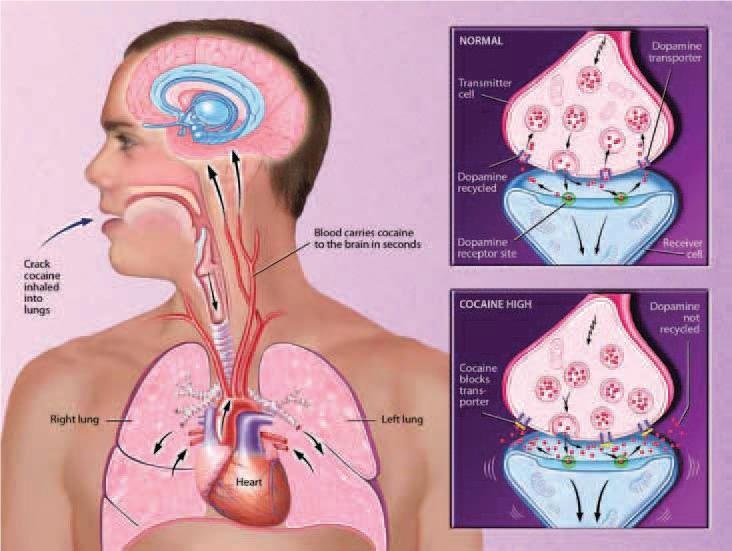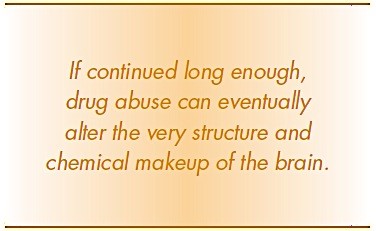Chapter 11: Adiction
In this Chapter
Psychostimulants
1This class of drugs includes cocaine and amphetamines. In 2009, in the United States, an estimated 4.8 million people age 12 and older had abused cocaine. A popular, chemically altered form of cocaine, crack, is smoked. It enters the brain in seconds, producing a rush of euphoria and feelings of power and self-confidence. A form of methamphetamine that can be smoked, “crystal meth,” also has become popular. The key biochemical factor underlying the reinforcing effects of psychostimulant drugs is their ability to greatly elevate the brain chemical dopamine in specific brain regions, such as the nucleus accumbens. Alterations in dopamine activity in the accumbens, induced by chronic cocaine intake, are thought to result in a progressively increasing motivation to take the drugs, eventually leading to addiction.
2Cocaine users often go on binges, consuming a large amount of the drug in just a few days. A crash occurs after this period of intense drug-taking, resulting in such symptoms as emotional and physical exhaustion and depression. These symptoms may come from an actual shutdown, or crash, in dopamine and serotonin function, as well as an increased response of the brain systems that react to stress. Vaccines to produce antibodies to cocaine in the bloodstream are in clinical trials.

